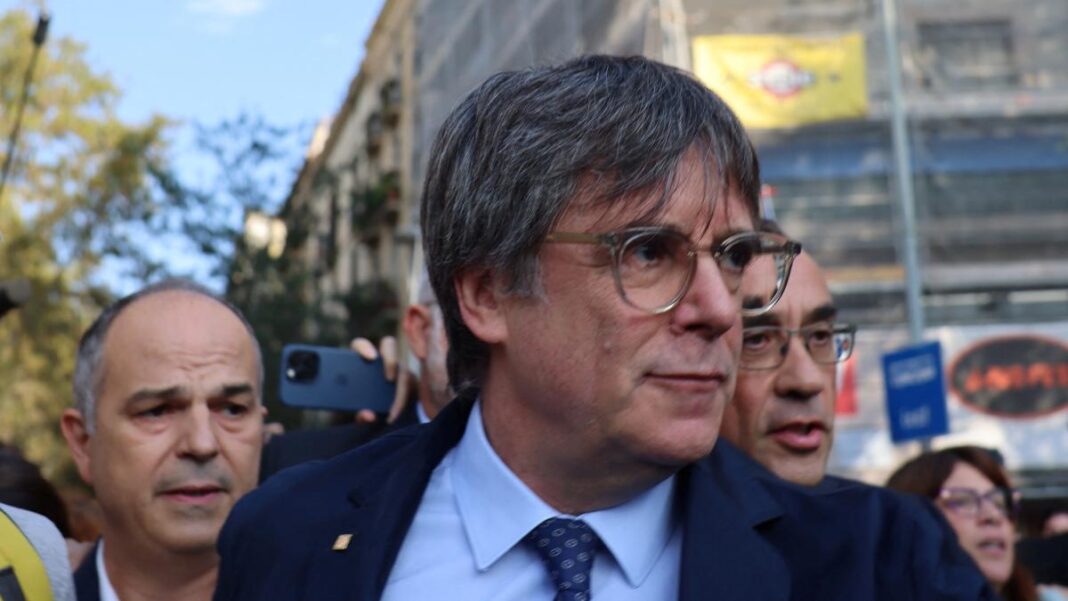BTN News: In a turn of events that has sparked a flurry of questions and concern, Judge Pablo Llarena of Spain’s Supreme Court has demanded thorough explanations from both the Mossos d’Esquadra and the Ministry of the Interior regarding the botched attempt to arrest former Catalan President Carles Puigdemont in Barcelona. Puigdemont, who has been a fugitive since the Catalan independence referendum in 2017, made a brief yet significant appearance in Barcelona, eluding capture despite an existing arrest warrant. His unexpected presence and subsequent escape have left law enforcement agencies scrambling for answers, particularly given the extensive efforts made to apprehend him.
Judge Llarena, who has been deeply involved in the legal proceedings surrounding the Catalan independence movement, issued official requests to both the Catalan police and the Ministry of the Interior. He is seeking detailed reports on the operational strategies that were put in place to arrest Puigdemont, specifically questioning the planning, execution, and, most importantly, the reasons behind the operation’s failure. The judge’s inquiries extend to identifying the officials responsible for the design, approval, and execution of the police operation, highlighting the gravity of this lapse in what should have been a tightly controlled operation.
The situation has escalated further as the head of the Mossos d’Esquadra, alongside the Catalan Minister of Interior, Joan Ignasi Elena, has been called upon to address the public and provide a clear account of what transpired. The operation, which involved heightened security measures around the Catalan Parliament and the broader Barcelona area, has been criticized for allowing Puigdemont to slip through the cracks, despite his high-profile status and the anticipation of his potential return to Catalonia.
Judge Llarena’s frustration is palpable as he also directs his concerns toward the Spanish Ministry of the Interior, led by Minister Fernando Grande-Marlaska. The judge has demanded a thorough review of the orders that were issued to monitor and detain Puigdemont at the border, along with an investigation into the actions (or inactions) of the officials tasked with the operation. This is particularly critical given that Puigdemont’s evasion occurred despite the “Operation Jaula,” which saw widespread roadblocks and checkpoints across Catalonia in an effort to prevent his escape.
The embarrassing mishap, where Puigdemont managed not only to appear at a public event near the Arc de Triomf in Barcelona but also to vanish shortly afterward, has prompted a deeper investigation. The former Catalan leader managed to leave the scene in a vehicle reportedly owned by a Mossos d’Esquadra officer, who, along with another officer, has since been detained. This incident has raised serious concerns about the possible involvement of law enforcement in aiding Puigdemont’s escape, further complicating an already tense situation.
In response to this fiasco, the Mossos initiated a widespread manhunt across Catalonia, setting up roadblocks and deploying additional resources to track Puigdemont down. However, these efforts were ultimately in vain, as Puigdemont remained elusive, further undermining the credibility of the police operation. Additionally, Jordi Turull, the Secretary-General of Junts per Catalunya and a close associate of Puigdemont, has been summoned for questioning regarding his role in the incident, adding another layer to this complex and politically charged case.
This latest episode in the ongoing saga of Carles Puigdemont underscores the challenges facing Spanish authorities as they continue to grapple with the fallout from the 2017 Catalan independence referendum. The apparent failure to detain Puigdemont despite a coordinated effort reflects broader issues within the coordination and execution of high-stakes police operations in politically sensitive contexts. As the investigation unfolds, it remains to be seen how this incident will impact the broader political landscape in Spain, particularly in relation to the Catalan independence movement.


